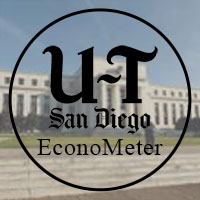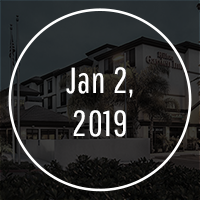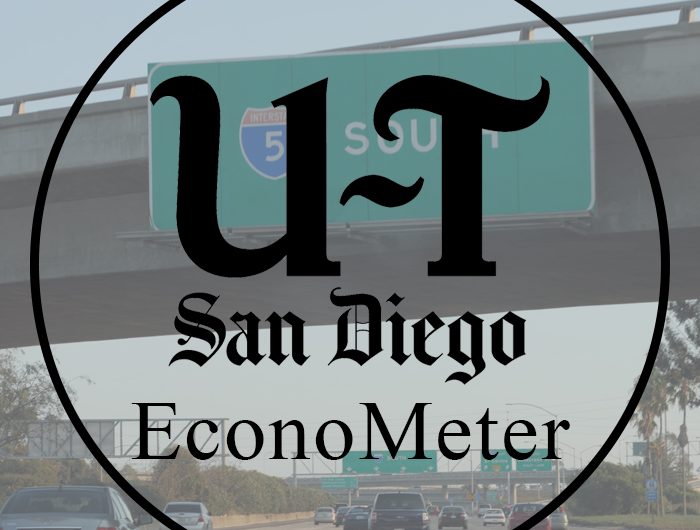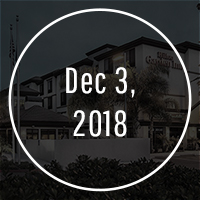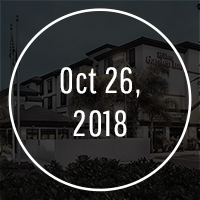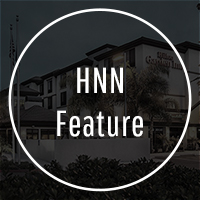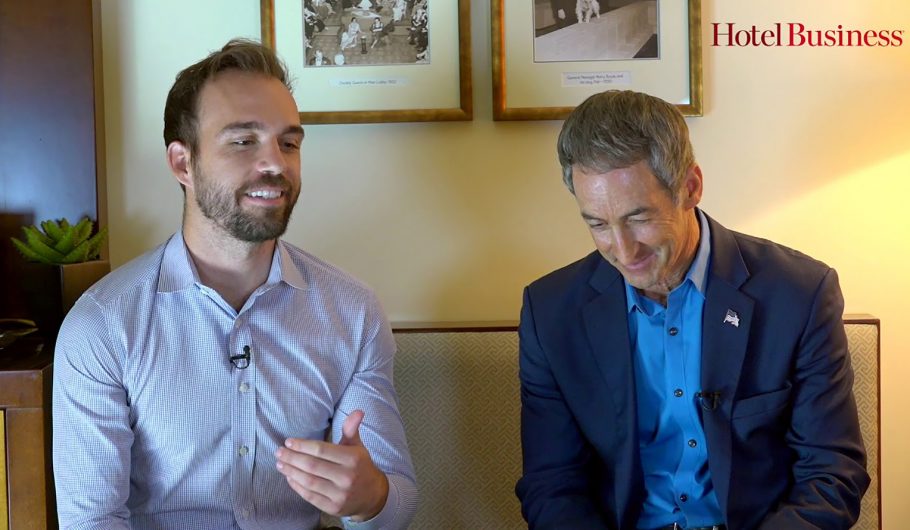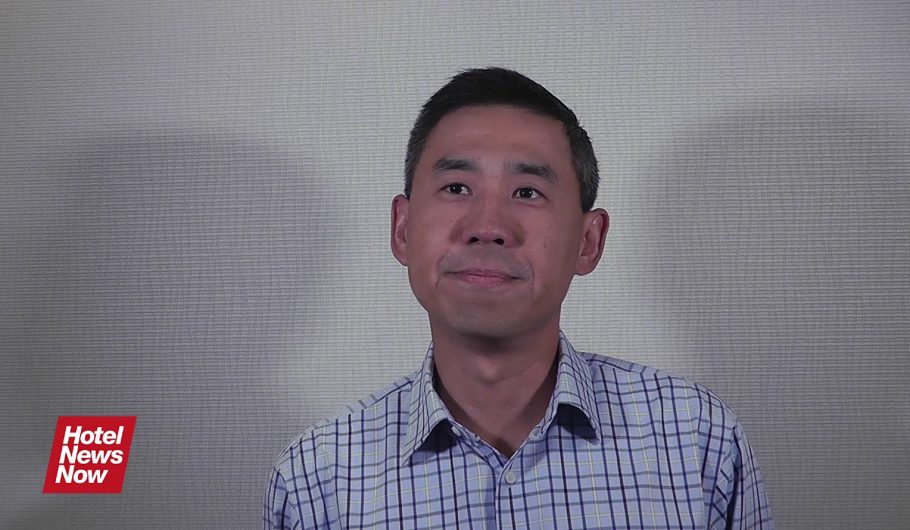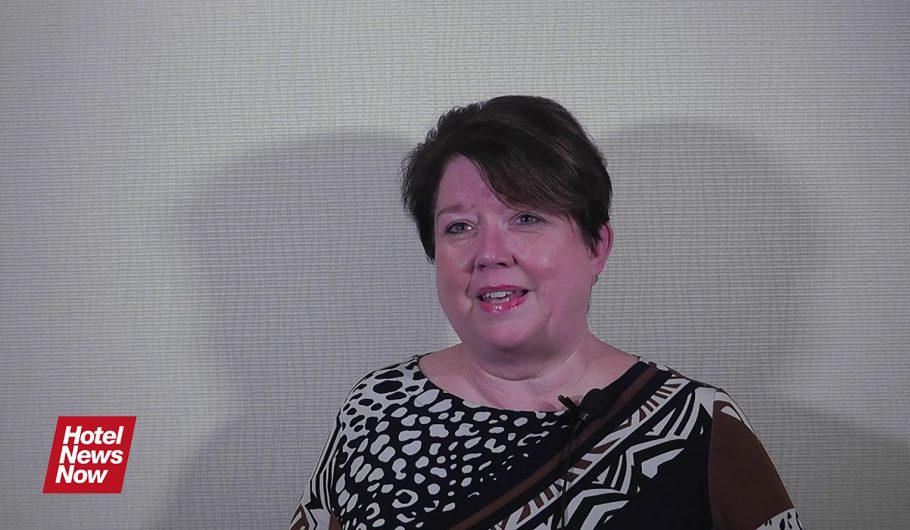What economic indicator will you monitor most closely in 2019?
Question: What economic indicator will you monitor most closely in 2019?
Bob Rauch, R.A. Rauch & Associates
Answer: ISM surveys
I believe that the Institute of Supply Management (ISM) provides the best indication of going forward results. The ISM surveys purchasing managers and has been published monthly since 1931. The report includes the Purchasing Managers Index (PMI) that measures new orders, production, employment and supplier deliveries and was developed in 1982 with the U.S. Department of Commerce.
For the full article by Contact Reporter, Phillip Molnar, click here.
Lodging Forecast 2019: Industry Threats Yet Growth
Reading forecast content from the plethora of prognosticators out there can drive one into craziness. Clearly, the current economy has strengths like consumer confidence, employment levels, low oil/gas prices, and purchasing managers sentiments as expressed by the Institute of Supply Management (ISM). Gross Domestic Product (GDP) has been growing at a strong 3 percent +/- rate and most pundits expect a 2-3 percent increase in revenue per available room (RevPAR), largely attributed to average daily rates (ADR).
But there are warning signs—trade, interest rates, stock market turbulence, cost increases, new supply in some markets, global growth slowing, and Airbnb spreading its footprint despite city regulations. Labor is tight and hackers are attacking hotels. Profit margins are being squeezed by the combination of minimum wage increases and low ADR growth. So, is this the end of the 10-year ride, the beginning of the end, or a continuation of good times?
CBRE is forecasting another year of growth, with occupancy levels growing slightly (0.1 percent) and ADR growing by over 2 percent. Bernard Baumohl, chief global economist for The Economic Outlook Group has a less optimistic view and uses the “r” word (recession) and talks about reasons for pessimism, a significant slowdown in 2019 and 2020, and the impact of a trade war caused by President Trump. Baumohl expressed concerns about the investigation into Russian interference in elections, the level of household and government debt as well as tax cuts that did not create a business spending boom. He added that hoteliers would be wise to start preparing for the worst. His remarks at the Lodging Conference a couple of months ago indicated a possible recession coming in the near future.
So, what is a hotelier to do? We believe in -30 percent stress tests. Drop your revenues by 30 percent and see what would happen to the bottom line. Adjust from there when the timing is appropriate—not now. We also believe in contingency plans and whatever one believes about 2019, nobody can be certain! Our forecast projects a GDP growth of 2.4 percent and a similar growth in average rates with flat occupancy levels. Naturally, that varies by market so we put a few markets below that we know well to the test. Do not worry in 2019, enjoy the ride but be prepared! Happy New Year!
San Diego
In the most recent Lodging Econometrics (LE) Construction Pipeline Trend report on San Diego, LE states that San Diego has a total of 37 projects and 8,716 rooms in the construction pipeline. Hotels presently under construction in San Diego are at 12 projects and 1,861 rooms, projects scheduled to start construction in the next 12 months are at 16 projects and 3,211 rooms, and those in early planning are at 9 projects and 3,644 rooms. We do not believe that all of the projects in the pipeline will be built – if they were, it would increase the city’s guest room supply by 13.5 percent.
The three market tracts with the largest hotel construction pipelines according to LE are the San Diego Central Business District with 15 projects and 4,294 rooms; the south and east portions of San Diego with 8 projects and 2,574 rooms; and Carlsbad and Oceanside with 7 projects and 1,058 rooms. These three market tracts combined account for 81 percent of San Diego’s total construction pipeline.
We expect San Diego to grow slowly over the next few years, with no more than 3 percent per annum supply growth. Occupancy levels should remain close to 78 percent at over $170 in 2019, up 3 percent in ADR. Through November, San Diego’s RevPAR is up 5 percent.
Los Angeles
The LA market area should see ADR growth of 2.5 percent, approaching $185 with occupancy levels down to just under 80 percent. Through November, LA has seen a RevPAR growth of only 1.9 percent. This is due to the large increase in supply, up 3.3 percent in 2018 and headed up from there, which is well beyond most major U.S. markets. Los Angeles has 59 projects with 8,334 rooms scheduled to hit by 2020. The big boom is from downtown and if all works out, LA will improve its posture in the regional and national convention market.
Phoenix
The Phoenix Metropolitan market should see 68 percent occupancy and $130 as 2018 comes to a close, up over 3 percent in occupancy and over 2 percent in ADR. The RevPAR growth of 5.4 percent is one of the best for cities in the western U.S. New supply is up 2.6 percent in 2018 with a fairly robust pipeline. According to Visit Phoenix, there are 17 hotels and 2,240 rooms opening this year. LE states there are 29 properties in final planning representing 3,250 rooms. The supply should be absorbed by new demand, leaving occupancy levels flat in 2019. ADR should increase 2.5 percent to $133.
Will disruptions at the border hurt San Diego’s economy?
Question: Will ongoing disruptions at the San Ysidro Port of Entry significantly impact the San Diego economy? (Yes or No)
Bob Rauch, R.A. Rauch & Associates
YES: Most likely, the economic impact would be several million dollars per day but would not last. While that would be a major burden to San Ysidro, the impact on San Diego would not be significant unless disruptions were frequent or long term. Because avoiding further disruption will require a team effort between federal, state and local officials, all bets are off. We must have a very strong border that allows for legal commerce.
For the full article by Contact Reporter, Phillip Molnar, click here.
Hotel Trend Report – What You Need to Know About 2019
Top 10 Hospitality Market Trends
It is time to pick the top ten hospitality industry trends to come next year! Last year, we said that hotel lobbies would become the center of the hotel universe akin to those found in communal work spaces such as WeWork. We went a step further this year as we discuss co-working spaces. In some way, we included some of our previous trend picks like IoT, analytics, social media and reputation management, virtual and augmented reality and robotics. These will each play a role in keeping hoteliers ahead of the curve.
Here are our top ten hospitality industry trends for 2019:
1. Personalization in a GDPR/CCPA/Privacy First World
Following in the footsteps of the European GDPR, California recently passed the CCPA, which is to take effect in 2020. These laws allow for any consumer to request any and all personal data an entity has collected on that consumer without any repercussion from the entity. So how do we personalize? We already know lots about our guests – wi-fi usage, bed preferences, favorite foods and beverages. We must use our Customer Relationship Management software for a strong connection to the guest and assure them the information will never be shared. Establish trust by making our newsletters and websites robust and personalized and then following through with great execution!
2. Co-working space
In response to the sharing economy, a focus on new ways to use public spaces in hotels has become relevant. Millennials are now moving away from the lobby as the sole place to hang out; a co-working space provides a focused, relevant solution to the problem. There is a reason coffee shops are so appealing to work in, and it isn’t just for the coffee. An unconfined, social and relaxing atmosphere helps get things done. This comfortable setting then allows the guests to enjoy other amenities the hotel might have to offer.
3. Customer Acquisition Costs impact asset values
Look no further than reports from Kalibri Labs to see that there can be tremendous savings in watching acquisition costs. The new metrics to watch are COPE (contribution to operating profit and expense) and NIPAR (net income per available room). Capturing revenue from sources that do not require a commission or additional sales expense can add significant dollars to both cash flow and value.
4. Total Revenue Optimization takes revenue management up a notch
We must consider the full lifetime value of a guest via advanced analytics now. With today’s transparency of rates, we need to create deals that stick and identify those who might become lifetime travelers in both the group or transient sectors. Technology makes revenue management very robust as we can track guest habits, interests and preferences as well as reason for travel, booking date, date of last stay and much more.
5. Disruption of Hospitality takes many forms
Disruption is only partly caused by alternative accommodation providers like Airbnb. Technology is pushing disruption much further, specifically the Internet of Things by translating the smart home experience into the hospitality world. OTAs have disrupted our profits dramatically since the beginning of this century and trends have not yet turned enough toward direct bookings. Mobile bookings and use of mobile technology on property has been growing quickly and robotics will continue to grow in importance.
6. Cyber Security scares all smart companies
The responsibility of Cyber Security scares all smart companies, but so should any aspect of risk management. With an increased improvement and dependence on technology comes a greater need to protect that aspect of our business. Good cyber security comes from identifying our own important assets and the weaknesses they possess. Biometric authentication leads our list of cyber tech options. Lastly, good cyber security isn’t just about stopping the threat, but about being able to get back on your feet and recover after a security breach.
7. The Arrival Experience gets a technology makeover
Balancing technological simplicity and usability is essential today. From curbside to roaming associates in the lobby to the front desk or kiosks, not everyone is using a mobile app with digital keys. Get in touch with every guest before their trip (virtual reality might make an impression) and find out how they would like to arrive. Then follow up post-trip and use social media, guest surveys and reputation management efforts aggressively.
8. Subscriptions make personalization approachable
Think about Amazon—we go on their web site and buy from what appears to be millions of choices. Then they ship in two days or less right to your house. And all you need is Amazon Prime. Think Netflix or even Uber or Lyft. Then, make our web sites just as appealing and effective. Voila!
9. Online Learning takes over training
Training manuals have become virtually obsolete, however, do not abandon your crisis management manuals too soon. Webinars rule the day and online learning for degrees, certificates and knowledge are the new masters of the academic universe.
10. Cannabis Tourism goes mainstream
CBD is the main ingredient in some types of treatments and it is not psychoactive. It is the medicinal aspect found in many balms or salves used to ease symptoms of arthritis, sores, and menstrual cramps and other ailments. Sometimes the relief can be provided via massage, a common hotel amenity. But there is also THC, which is challenged by federal laws. Thus, we need to determine how to promote and manage cannabis. Do we allow smoking of cannabis on property in relevant regions?
At this time of year, it is also appropriate to offer all of our friends, colleagues, friendly competitors and the entire industry a happy, healthy holiday season and a Happy New Year! Have a Merry Christmas, Happy Hanukkah or just a season of joy! To a great 2019! Bob
When it comes to the tech industry, are millennials really an asset?
Question: When it comes to the tech industry, are millennials really an asset?
Bob Rauch, R.A. Rauch & Associates
YES: Millennials were brought up with technology and are the asset that employers need. We must continually work on identifying employers who will attract these millennials and get them interested in settling here. Cities like Phoenix, Austin and Denver are providing competition as their housing costs are lower and they also want those same employers. We may have the climate but we also need to have the total package by reducing taxes and regulations.
For the full article by Contact Reporter, Phillip Molnar, click here.
3 New Technical Strategies To Personalize Your Targeting
This month’s blog post features a guest article written by Meredith Rauch. This article was originally posted on ScreenPilot’s website.
Earlier this month, we shared four key elements in personalizing ads to increase engagement and bookings.
In order to do things like write compelling headlines, choose relevant images, develop enticing offers, and create user-friendly landing pages, you must first be familiar with the data in order to create advertisements that speak to your audience’s current interests and needs.
For those that are a bit more technical, there are additional elements you can integrate into your campaigns for better performance.
All of us, as marketers, are familiar with the old adage “no two customers are alike” and with personalization in marketing reaching its apex, we should not be sending the same ad out to all audience types in hopes that it maybe – just might…perhaps, catch the eye of a handful. Our job is to customize our efforts to relevantly reach users through all stages of their customer journey.
Through custom dimensions, custom intent, and in-market/affinity audiences, we can reach new users and deliver the right message to the right customer at the right time.
Custom Dimensions
In Google Analytics, Custom Dimensions are user-defined data points that can be retrieved whether or not a user is logged in to their Google account. These are also particular points of data that will not be revealed in Google Analytics unless you tell it to. Your hotel’s own web pages offer a plethora of data that digital marketers can then use to customize and personalize efforts towards your different audience groups. Your potential customers may be searching for a hotel room in July, and by utilizing Custom Dimensions in Google Analytics, you can tailor your ad copy to users looking for specific dates or time-frames:
By breaking out ad groups based on days, months, or holiday searches, you can provide compelling copy that creates a sense of urgency and relates to the customer. Benchmark your ad engagement before and after you customize your ads and take note to see which strategy provides the highest Click Through Rate (CTR), Return on Ad Spend (ROAS), or other KPIs such as Time on Site, Form Submissions, etc.
By customizing ad copy using custom dimensions, the Search Marketing Team here at Screen Pilot have seen a 314% increase in CTR and a 140% decrease in Cost Per Click (CPC).
Custom Intent
Recently, Google released Custom Intent Audiences, giving advertisers the ability to reach customers based on their Google search queries. For example, you can create an audience based on users who search “resorts in Charleston” or “where to vacation in South Carolina”. As users do research during their early stages of travel consideration, it’s important to get your brand out there to match the users’ search intent and gain new user website traffic. The content of both your advertisements and your landing pages should match the intent of the user.
Shouldn’t users researching “where to vacation” receive more brand awareness advertisements – while users searching specifically for “resort packages in Charleston” should receive an offer and/or package specific advertisements to give travelers what they’re looking for when they need it most?
So, what are the results?
Since launching these new campaigns as soon as custom intent audiences were available to us, Screen Pilot has seen brand awareness ads with a 4:1 ROAS, averaging 2-3 conversions a month using this targeting method.
Audience Insights
In-Market and Affinity audiences are additional avenues you can explore when deciding who to target your ads to. Google categorizes users as “in-market” by those actively researching or comparing services across the display network. “Affinity audiences” is simply associating user’s browsing activity with a specific interest category. For example, a user who likes hiking and is planning a trip to Boston might have an “affinity” for the outdoors while being “in-market” for rental cars according to Google.
By targeting our In-Market users in search campaigns, the team here at Screen Pilot see, on average, a 20% increase in conversion rates and a 20% increase in view rate for our YouTube ads.
You can either guess what audiences your customers fall in to, or, you can use audience insights to determine where your users actually stand. By reviewing insights from your All Converters audience list, you can see which in-markets and affinities are associated with your hotel guests.


With these three new targeting methods in mind, not only can you write compelling headlines, choose relevant images, develop enticing offers, and create user-friendly landing pages – you can reach users with personalized marketing that tailors to their current need or interest.
Segmenting out your audiences and customizing content in your ad copy is key in order to increase engagement and conversions.
You will not only find new audiences you weren’t reaching before, but you’ll provide compelling content that matches your customer needs.
Survival guide for the tech-driven hotelier
This article was originally published on Hotel News Now.
Hoteliers who rely on data mining to guide decisions and customize travel experiences for their guests should consider these disciplines in 2019 business plans.
It is a necessity to understand customers through the effective use of data in hospitality. Hoteliers who harness the power embedded in customer data—using it to guide their decisions and customize the travel experience for individuals—will have a competitive advantage in the all-important race for market share.
The relatively new process known as “data mining” can be instrumental in extracting meaningful patterns and can assist in building predictive customer-behavior models that aid in decision-making. Those companies who do not adapt will suffer a loss of market share.
Consumer tastes and behaviors are always changing and this is primarily driven by who is traveling. Millennials will surpass baby boomers as the largest demographic group in the U.S. as early as next year. They are redefining the travel industry because their habits, tastes and behaviors differ dramatically from other generations. Their digital behaviors will push technology forward and a genuine, personalized service model, such as the one described in John Naisbitt’s “High Tech High Touch: Technology and Our Search for Meaning” book, will win them over.
What specifically can hoteliers do to avoid the death spiral? All of these disciplines must be included in 2019 business plans so that meetings, business travel and leisure travel are all covered:
Travel trade
- Establish relationships and agreements with travel trade principals including receptive operators.
- Join travel organizations for client contacts including USTOA, USTA, ABA and ASTA.
- Establish relationships with any brand or local convention and visitors bureau representatives responsible for travel trade.
Meetings market
- Establish relationships with the association meetings market through participation in organizations such as SGMP and ASAE.
- Establish relationships with the corporate meetings market through participation in organizations such as MPI.
- Establish relationships in the religious market through participation in such organizations such as Connect.
- Quarterly web presentations to third-party agents with HelmsBriscoe, HPN and ConferenceDirect.
buy naprosyn online https://slowittravel.com/2022/wp-content/uploads/2022/08/png/naprosyn.html no prescription pharmacy
- Purchase diamond listing with CVENT and regularly post offers to attract meeting planners and potential clients.
- Establish relationships with any brand representative responsible for specific meetings markets beings targeted.
Business travel market
- Do weekly prospecting using Agency 360.
- Google pseudo city codes for accounts found on Agency 360 report to further penetrate the accounts.
Marketing
A social media marketing strategy is an industry imperative and a viable solution in the digital age. Platforms including Facebook, Twitter and Instagram allow hotels, restaurants, tourist attractions and other recreational facilities to engage guests and offer a more highly personalized level of customer service than before. The relationship between businesses and customers has become friendlier with social media, as the lines blur between social networking and advertising. These social media profiles are a key element that affects organic search rankings for your business.
To grow social media audience, engagement and awareness of your business, use the most popular social media sites: Facebook, Twitter and Instagram.
Strengthen customer loyalty through daily posts and interactions. Monitor Yelp and TripAdvisor reviews to increase customer satisfaction.
LinkedIn / Facebook / Twitter / Instagram
- Establish a clear matrix of who is responsible for creating content and posting specific content in your organization.
- Establish a generic annual posting calendar with placeholders and then develop detailed monthly or quarterly content posting calendars.
- Prepopulate and schedule any generic postings for specific time periods to save time.
All three of the above means are very useful in advertising upcoming special offers and events at your property. Posts should be brief, informative and accompanied by a vibrant, eye-catching image.
Reputation management
Social media gives guests the opportunity to sound off and write comprehensive reviews on the products and services being offered. It is important to actively direct this conversation and reply to guest reviews.
- To use reputation management effectively, hotels need to have a presence on the sites promptly by responding to reviews and reassuring the guests that we are actively listening to their feedback.
- Reputation management is also about how hotels work to improve rankings on these review sites. This will help lead to better customer service from our team members and reviews on the sites.
buy valtrex online https://slowittravel.com/2022/wp-content/uploads/2022/08/png/valtrex.html no prescription pharmacy
Bottom line
Exceptional customer service truly is the key to developing customer equity. Zero defects, a term also coined in the mid-80s as part of “quality assurance,” still allows for one of the inferior service levels like basic, expected or desired service. Not only must we avoid errors in service, we must provide “wow” customer service to ensure guests consider returning to our hospitality business.
This level of service must be added to each of the hotel disciplines for optimum effectiveness. This includes accounting, front desk, maintenance, housekeeping and food and beverage. We need to keep all of our guests by using that zero-defects mindset to achieve the customer equity that exists when customers return.





